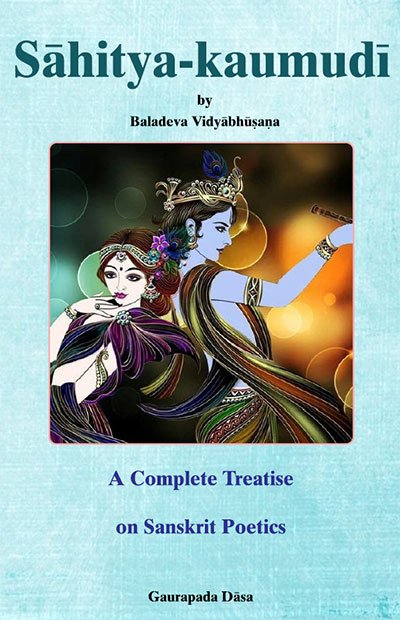Sahitya-kaumudi by Baladeva Vidyabhushana
by Gaurapada Dāsa | 2015 | 234,703 words
Baladeva Vidyabhusana’s Sahitya-kaumudi covers all aspects of poetical theory except the topic of dramaturgy. All the definitions of poetical concepts are taken from Mammata’s Kavya-prakasha, the most authoritative work on Sanskrit poetical rhetoric. Baladeva Vidyabhushana added the eleventh chapter, where he expounds additional ornaments from Visv...
Text 2.17
व्यङ्ग्येन रहिता रूढौ सहिता तु प्रयोजने ॥ २.१३ab ॥
vyaṅgyena rahitā rūḍhau sahitā tu prayojane ||2.13ab||
vyaṅgyena rahitā—devoid of an implied sense; rūḍhau—in conventional Indication; sahitā—endowed [with an implied sense]; tu—however; prayojane—in purposeful Indication.
In conventional figurative usage, Indication has no implied sense, but in purposeful figurative usage there is an implied sense.
rūḍhi-lakṣaṇāyāṃ na kiñcid vyaṅgyaṃ phalavatyāṃ tv asti tat.
In conventional figurative usage (rūḍhi-lakṣaṇā), there is no implied meaning whatsoever, but in purposeful figurative usage (prayojanavatī lakṣaṇā) there is one.
